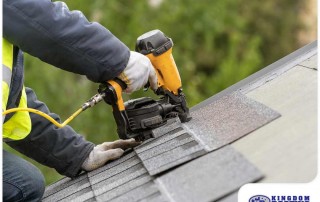In the summer, it is a rare day which passes without rain. Venice reports an average annual rainfall of 54 inches versus the national average of 38 inches. Our rainiest months are June through September, when we can experience double or even triple the rainfall than other months of the year.
Our homes are well suited for our climate and can withstand these copious amounts of water. However, if your roof has sustained any damage or is in need of maintenance, heavy rainfall could quickly cause a catastrophe. Although we are deep into the rainy season as of this writing, you can still proactively prepare for the storms yet to come. With a little preparation and awareness, you may prevent a lot of headaches.
Preparing for the Rainy Season
One of the biggest problems with summer storms is that they can dump impressive amounts of water on your roof in a very short period of time. Therefore even the slightest breach, leak or vulnerability can quickly become a problem. Whether you are reading this during the winter drought, or you are deep in the dog days of summer – here are some tips to make sure that your home and family stay dry.
- Look for Interior Leaks: It can be difficult to spot a small leak on a large roof. But what is immediately evident is a leak which has intruded into your living space. Walk into each room of your home and look up at the ceilings and walls. If you see any signs of staining, you should immediately investigate. Purchase a moisture meter from any hardware store, and you can determine if the ceiling or wall is exhibiting any moisture. If so, you probably have an active leak. Of course, if you see drips or condensation in these areas or around window frames. this is also cause for immediate action. Call a professional roofing contractor right away. The water has already made its way into your home, and it will not stop unless the point of entry is sealed.
- Inspect Your Attic: If you don’t see any evidence of leaking or water-staining in the interior of your home, you can breathe a sigh of relief. Move your inspection into the attic, and look for tell-tale signs of water intrusion. These include dark or damp areas on the wood framing, the presence of mold on any of the structure, or wet, compacted insulation. If you find evidence of water in the attic at this point, there is some good news. It is much easier to locate the position of the roof leak from this vantage point.
- Take a Good Look at the Roof: It would be irresponsible of us to advise you to climb onto your roof to look for obvious signs of erosion or deterioration; or to look for cracked broken or missing tiles. We would prefer that you play it safe and call a professional roofer to help you assess the condition of your roof. But if you want to look at your roof immediately to determine if you can see any damage, have someone hold a ladder and inspect the roof from the edges.
- Don’t Forget the Gutters: With so much water flowing during an afternoon rainstorm, it is imperative that your gutters are completely cleared of debris and are functioning correctly. If the water is stopped up in any location, it can easily back up and begin flowing into any other crack or crevice it can find. Be sure the gutters are fastened to the roof correctly, that the sections are fitted to each other correctly, and that there are no leaves, dirt, twigs or birds nests in the gutters or downspouts. Failure to have working gutters will cause water to cascade down the side of your home and along the foundation.
While we recommend that you perform a comprehensive roof inspection during the dry winter months, do not hesitate to call us at any time during the year if your roof needs maintenance. [company_name] has been the Venice area’s trusted team for decades – and we are here to help you through the South Florida rainy season.




